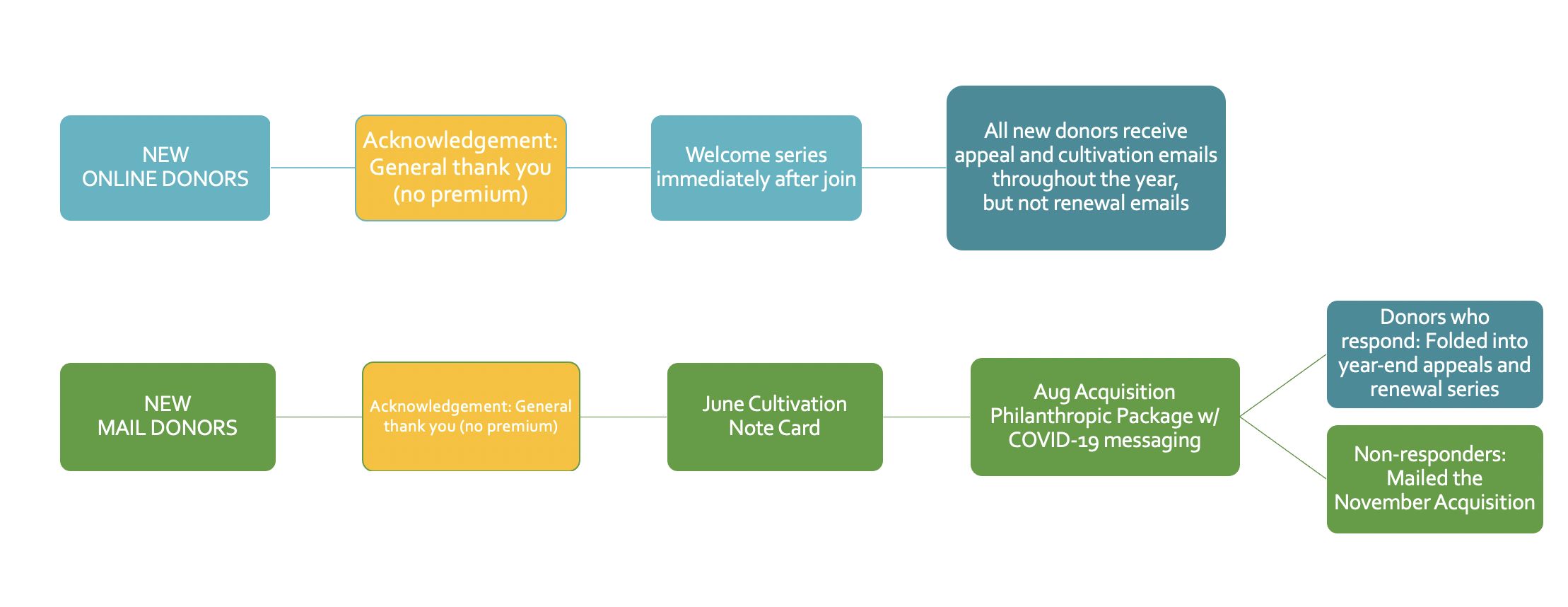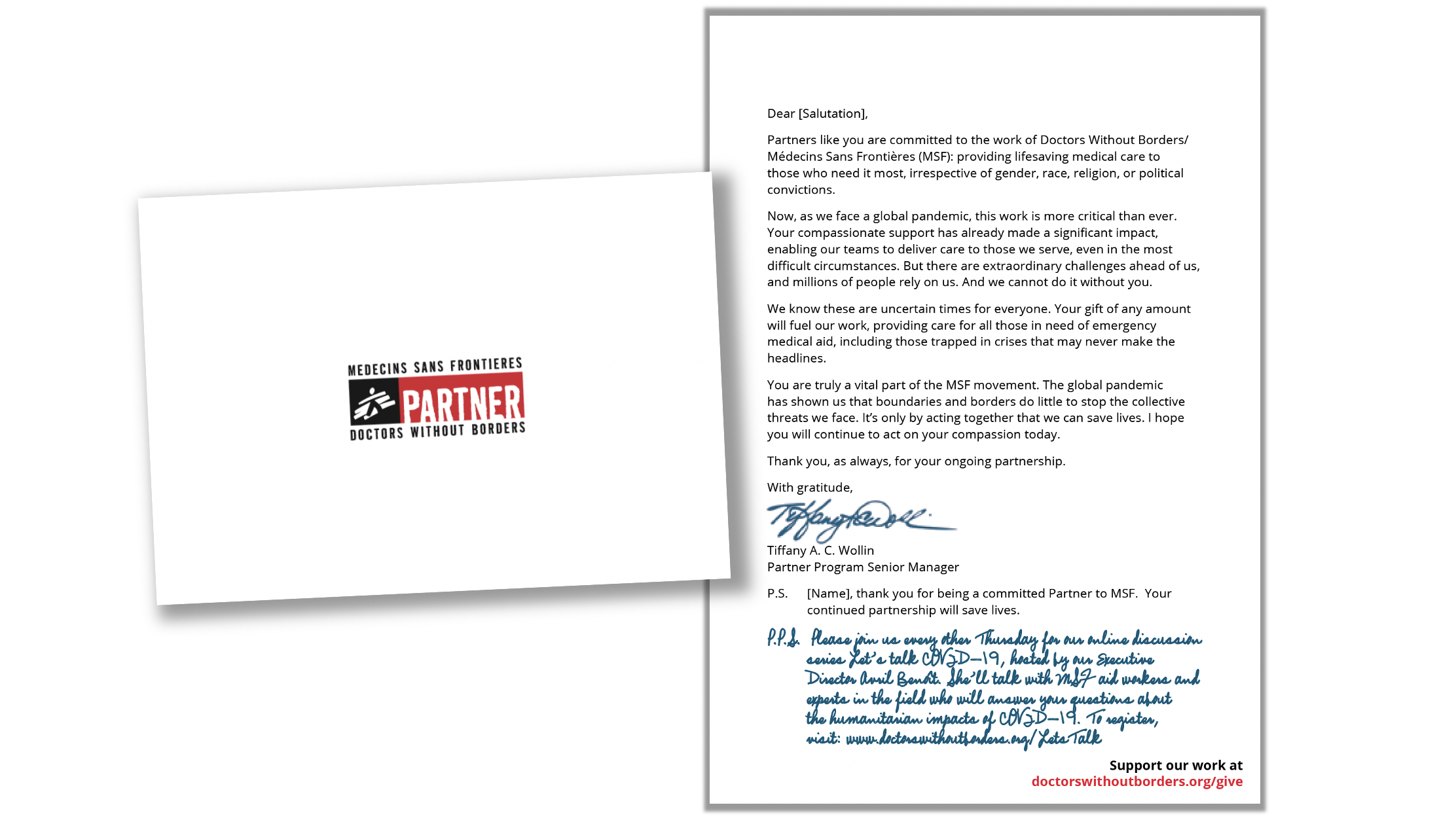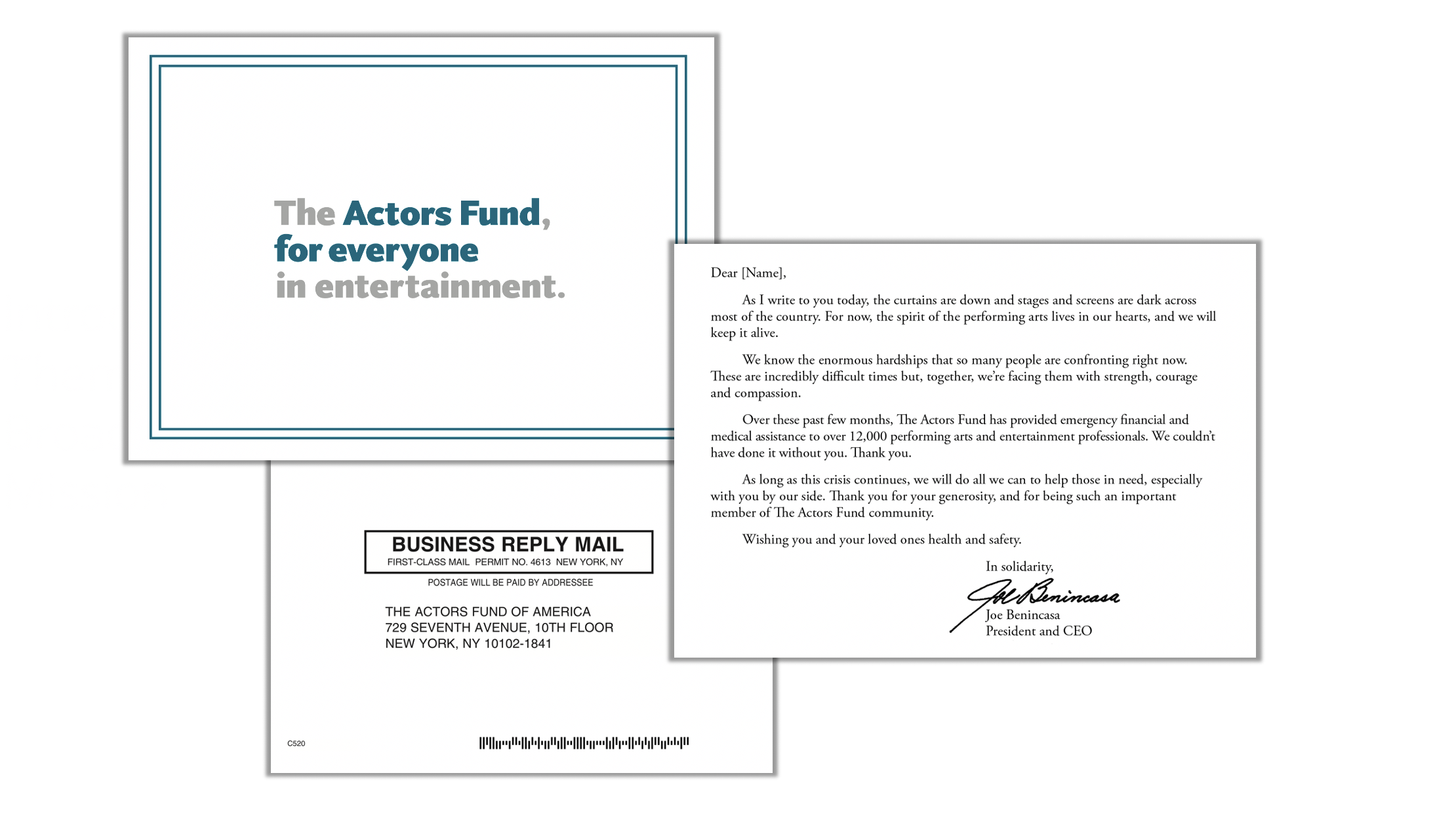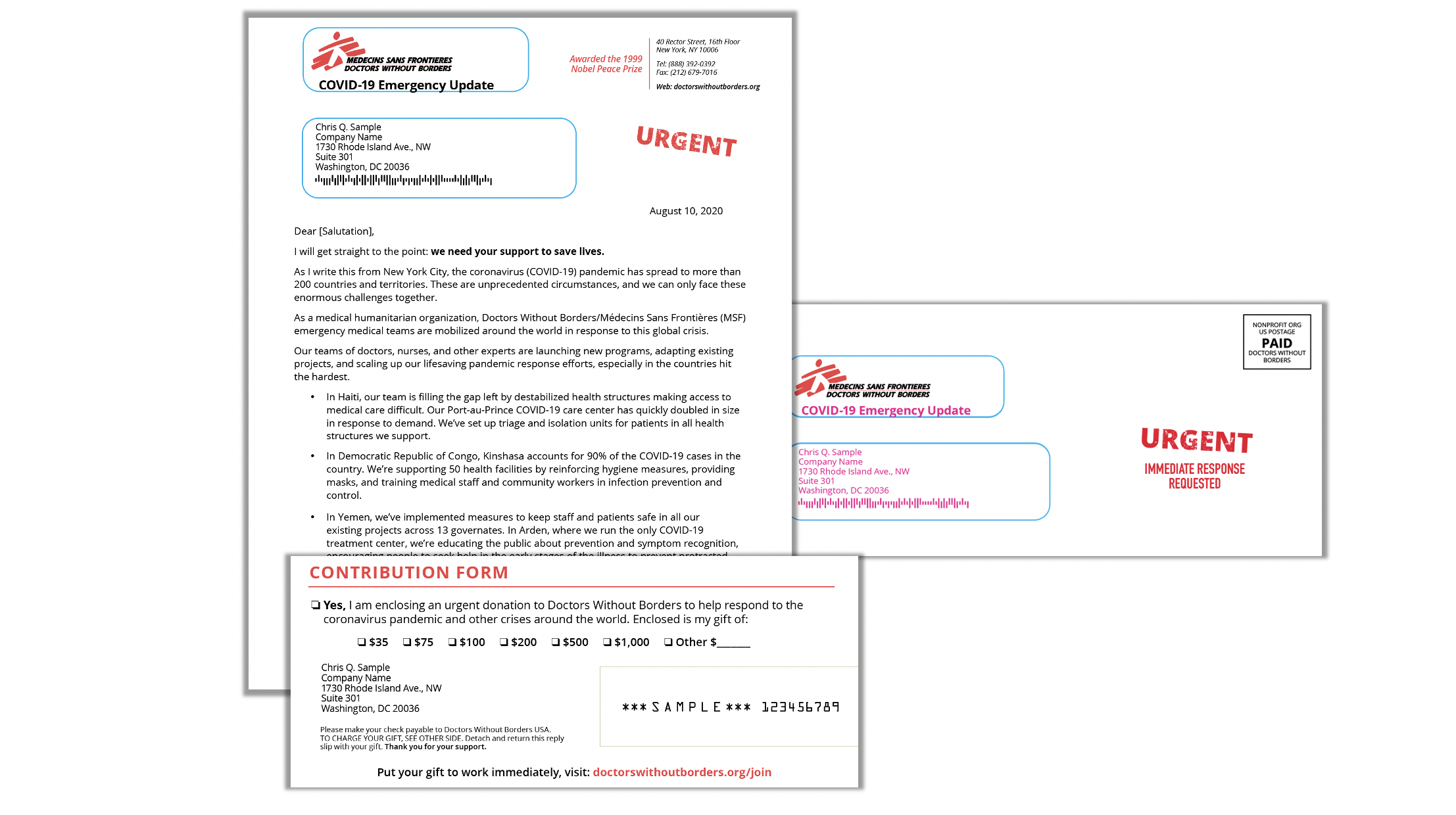How to Retain your COVID Emergency Donors
August 10, 2020 - by Lisa Maska, CFRE
I don’t have to tell you that the current COVID-19 pandemic is no typical emergency. The word “unprecedented” has been so overused, but it accurately describes what we’ve all been living through these past six months. Something entirely new for us all — fundraisers and donors alike. And for the nonprofits raising money to help in this crisis, it brings new challenges, too.
At the 2020 Bridge Online conference, I was fortunate to be joined by direct response experts from Doctors Without Borders and The Actors Fund, both of whom are Lautman clients. Jay Haddad, Manager of Individual Giving at The Actors Fund, and Vera Eastman, Marketing Manager at Doctors Without Borders, generously shared their experiences. They talked about the phenomenal growth their organizations had experienced since March in response to their work around the coronavirus, and shared their strategies for retaining their recently acquired COVID-19 emergency donors.
The Actors Fund sprang into action when Broadway and the entertainment industry closed up shop — literally overnight. It was a huge blow for the rank and file folks in the entertainment industry that The Actors Fund serves. And for most of the people they serve, their “side gigs” that helped make ends meet, like bartending and dog walking jobs, vanished overnight too. The Fund’s clients were in desperate need. Thanks to emergency mailings and email appeals, as well as myriad online entertainment events hosted by celebrities to benefit The Fund, they attracted many new donors through all channels.
As an emergency medical organization, Doctors Without Borders began working immediately to adapt their programs worldwide to help cope with the pandemic. And they swiftly brought their lifesaving work to other countries where they were not already working, including parts of the United States. Thanks to quick offline and online emergency campaigns, they too have seen a surge in new donors through channels.
It’s always a challenge to keep emergency-acquired donors, because it was a highly publicized event that got them to give. Often it was an impulse gift driven by emotion. While new donor retention averages 30%, for emergency donors it can drop significantly.
And for these organizations seeking to retain their new COVID-19 donors, 2020 is going to be a really tough year to try to keep them.
Consider the challenges: increasing donor anxiety around the pandemic, ongoing economic uncertainty, and a continued volatile news cycle. And on top of all of that is the election, the outcome of which will likely be protracted this year because of mail-in ballots— right at the critical year-end fundraising season.
What’s an organization to do?
Focus on best practices for new donor retention:
Thank them meaningfully. Send out their thank-you promptly, and acknowledge what they gave to. Reflect back the program they supported. New donors are excited to have supported you, and your targeted message will help validate their good decision to donate to you.
Show impact. Make it clear the donor’s gift made a concrete difference. Doctors Without Borders created a new COVID specific second-gift conversion package they added to their acknowledgement series. All new donors received the regular thank-you, and then this special thank-you package focusing on their COVID work. It included a moving photo of a field worker and a young patient, and included a direct ask.
Start to introduce to broader mission. If you acquire donors on one aspect of your mission, it’s important to start to introduce them to your broader mission. It’s tempting to rush to show them everything at once — but be cautious. All you know is that they gave to your emergency ask, so you don’t know if they will necessarily care about every aspect of your mission right off the bat. The Actors Fund used a successful notecard format with their new COVID donors, which included more institutional messaging in a brief format, to begin the conversation about everything that they do. Subsequent appeals talked about other aspects of their program, like their work with seniors.
Give them a variety of things to respond to. You should include a mix of approaches. Think about what techniques and messages resonate best with your supporters, and put these efforts in the line-up. This might include techniques like matching gifts, supporter cards, donor involvement devices, or front- or back-end premiums.
Your best conversion package might be what they gave to initially! It worked once, so try it again. For Doctors Without Borders, because they had ongoing COVID emergency acquisition efforts scheduled, they could include their new donors who had not yet made a second gift.
Create a plan. It’s important to map out the next 12 months with deliberate touchpoints. You can think about what you already have in place and can use, or perhaps adapt slightly. And you can think about new strategies like impact reports.

Determine what is working — and do more of it. If you’re finding success converting through particular efforts, don’t be afraid to re-map your strategy to take advantage of that.
Timing is key. Don’t let the new donors “rest” — get them into your mail and email efforts as soon as possible. The sooner you can get the second gift the better. And the sooner you ask, the more likely it is the donor will give again. Remember — the best performing segment is always your 0-6 month donors!
Eventually, you can start to move non-responders back into acquisition. The strong case for support will often convert the non-responders more effectively thanks to the stronger ask. With regular donors, you wouldn’t move them to acquisition until they hadn’t given in three years, but emergency donors could be moved there at 13 or 19 months. If they are hard to convert through donor appeals, move them to acquisition sooner — before the window of opportunity closes.
Lastly, consider modeling. Depending on your quantity, it could make sense to model your non-responders to prioritize higher-value donors.
Given how hard new donor acquisition has become, you will want to craft your best strategy to try to keep your hard-won new donors!
eNews Signup
If you enjoyed this article and are interested in being notified about future ones, please enter your email address

Enews Articles
October 2022
Engaging Networks Community Conference 2022
August 2022
April 2022
Build a Successful, Data-driven Digital Fundraising Program Through Testing!
February 2022
Is It Time for A Fundraising Reboot?
January 2022
New Year Brings Hope for the Future
May 2021
November 2020
Are You Ready for Giving Tuesday?
August 2020
Waxing Philosophical About Email Deliverability
July 2020
How to Ride the Wave and Raise Money During the 2020 Elections
July 2020
Telling Your Donors You Care in the Time of COVID (while still asking for a gift)!
June 2020
The Best $49 You’ll Spend All Year
May 2018
May 2018
4 Things You Should Know About 2017 Giving
March 2018
Navigating the Unknown Impact of New Tax Laws
August 2017
Case Study: Using SMS to Get Donations at Year-End
May 2017
February 2017
What (and Who) We Should Be Asking About State Laws
January 2017
2016 Digital Year-End: An Inbox Audit
September 2016
December 2015
October 2015
The Great Pumpkin and the Myth of the Unsolicited Donation
July 2015
July 2015
June 2015
Lady Gaga and the Importance of Relationships
May 2015
Back to the (Digital) Drawing Board
February 2015
Understanding Donors — The Old Fashioned Way
January 2015
My Four Fundraising Resolutions for 2015
November 2014
The Importance of Being Earnest
October 2014
AMMC Conference Teaches This Old Dog New Tricks
October 2014
Too Hot to Handle … How to Turn Warm Prospects into Donors
September 2014
Keeping Cross-channel Communications Consistent
August 2014
5 Tips for Better Fundraising Copy
June 2014
Keep Boredom out of the Boardroom
May 2014
April 2014
How to Raise Money from Baby Boomers
February 2014
Five Take Aways from the February DMA-NF Conference
January 2014
What Kind of Friend are You? Building Relationships That Last
December 2013
#GivingTuesday – Worth the Fuss?
November 2013
October 2013
1,500,050 Charities Making a Difference — A Statistic Donors Need To See
October 2013
The USPS Proposed Rate Hike — What Does It All Mean?
June 2013
Investing in Acquisition: How to Get Your Board on Board
May 2013
May 2013






